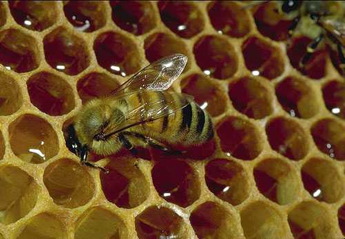When looking at a swarm as an individual entity, its actions are not complex and lend well to mimicry in the form of a computer agent. The interest is derived from the fact that many colonies of social insects, (ants, bees, termites etc.) seem to act without outside direction (autonomously) but, when taken as a whole, a cohesive and organised structural society is apparent. The nests and social structures created by ants, bees, termites and other insects are nothing short of staggering.

Above: A honeycomb structure. Source.
Incidentally, the hexagon is volumetrically the most
efficient regular polygon (optimisation is a field where
multi-agent systems are often applied). Triangles and
squares are the other regular polygons which tessellate to
fill a plane completely. Source

Above: A termite mound. Source.
Taking an ant as an example, it can:
1. Process sensory information and act on it.
2. Communicate with nest mates via touch and pheromones.
3. Make decisions based on information it has.
4. Lives in a natural environment.
5. Able to act autonomously.
These characteristics make an ant colony a perfect example
of a natural multiagent system.
Source:
Swarm
Intelligence From Natural to Artificial
Systems, Chapter
1, Pages 1-8.